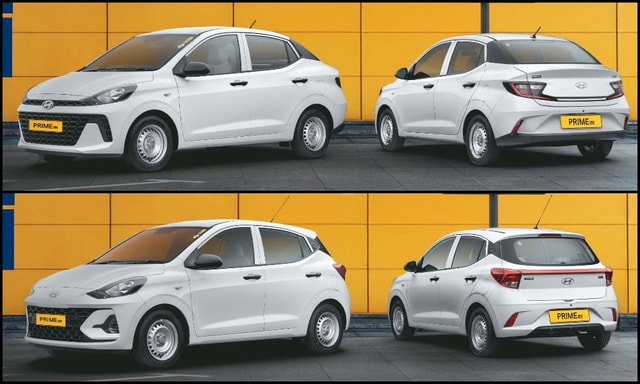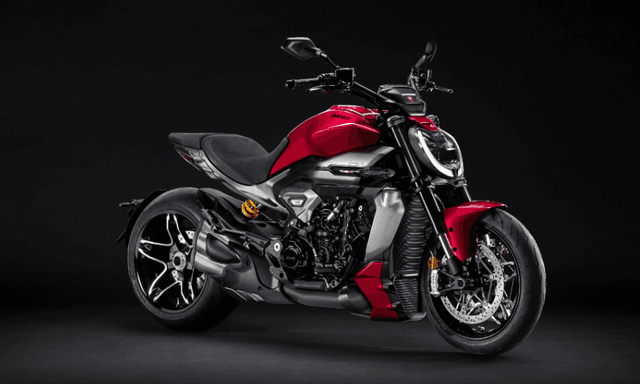Fatal Tesla Autopilot Crash Driver Had Hands Off Wheel

The driver of a Tesla Inc Model X car using Autopilot did not have his hands on the steering wheel in the six seconds before a fatal crash in California in March, the U.S. National Transportation Safety Board said Thursday. The NTSB said in a preliminary report the 38-year-old driver, who died in the hospital shortly after the crash, had been given two visual alerts and one auditory alert to place his hands on the steering wheel during the trip.
The report also said the vehicle had sped up from 62 miles (99 km) per hour to nearly 71 miles (114 km) per hour in the three seconds before the March 23 crash - and above the 65 mph (105 km per hour) speed limit. Five days later, the electric car's high-voltage battery reignited and the fire department had to extinguish the blaze.
Tesla's Autopilot is a driver assistance system that handles some driving tasks and allows drivers to take their hands off the wheel. Tesla says drivers are supposed to keep their hands on the wheel at all times when using the system.
Tesla declined to comment on the NTSB report, but said in March that the driver had not braked or taken actions to avoid the crash in the final seconds before the accident.
The safety board is investigating four Tesla crashes since last year and looking at post-crash fire issues and the use of Autopilot.
The report said the driver in the March incident got warnings to put his hands back on the wheel more than 15 minutes before the crash. In the minute before the accident, his hands were on the wheel for a total 34 seconds, but not in the last six seconds before he struck a crash attenuator and concrete barrier on U.S. Highway 101 in Mountain View, California, the report said.
Bystanders managed to get the driver, Walter Huang, out of the car before it was engulfed in flames, and he was taken to a hospital where he died from his injuries.
Tesla's owner's manual warns drivers that the system may not detect stationary objects when traveling at higher speeds.
Last month, police in Utah said a Tesla in Autopilot mode crashed into a parked fire truck. In that incident, the driver of the Model S did not touch the steering wheel in the 80 seconds before the crash.
The report raised an issue for Tesla vehicles with Autopilot, as well as other vehicles with adaptive cruise control, said Bryant Walker Smith, an assistant professor at the University of South Carolina School of Law. "Stationary objects are also a challenge for many adaptive cruise control systems and automated emergency braking systems," he said.
Tesla shares closed down 1 percent at $316.09 per share in trading on the Nasdaq on Thursday.
In April, the NTSB removed Tesla as a party to its investigation of Huang's crash after the automaker made public statements. Tesla responded by asserting the NTSB is "more concerned with press headlines than actually promoting safety."
The NTSB previously faulted Tesla in a 2016 fatal crash in Florida in which Autopilot was engaged, saying "system safeguards were lacking" and "Tesla allowed the driver to use the system outside of the environment for which it was designed and the system gave far too much leeway to the driver to divert his attention."
(Reporting by David Shepardson; editing by Chizu Nomiyama, Susan Thomas and Jonathan Oatis)
(This story has not been edited by NDTV staff and is auto-generated from a syndicated feed.)
Latest News
 Carandbike Team | Dec 30, 2025Hyundai Aura, Nios-Based Prime SD & Prime HB Taxis Launched In IndiaCarmaker rebrands fleet models under the Hyundai Prime brand rather than as separate variants of its passenger car range, as it previously did with the Xcent1 min read
Carandbike Team | Dec 30, 2025Hyundai Aura, Nios-Based Prime SD & Prime HB Taxis Launched In IndiaCarmaker rebrands fleet models under the Hyundai Prime brand rather than as separate variants of its passenger car range, as it previously did with the Xcent1 min read car&bike Team | Dec 30, 2025VinFast's V-Green Partners With Hindustan Petroleum To Setup EV Charging StationsV-Green is owned by Pham Nhat Vuong, Chairman of Vingroup Corporation and founder of VinFast.1 min read
car&bike Team | Dec 30, 2025VinFast's V-Green Partners With Hindustan Petroleum To Setup EV Charging StationsV-Green is owned by Pham Nhat Vuong, Chairman of Vingroup Corporation and founder of VinFast.1 min read Jafar Rizvi | Dec 30, 20252026 Kawasaki Versys 650, Vulcan S, Z650RS Launched: Now E20 CompatibleKawasaki has updated its 650cc range of motorcycles with E20 fuel compatibility and is offering new paint schemes.1 min read
Jafar Rizvi | Dec 30, 20252026 Kawasaki Versys 650, Vulcan S, Z650RS Launched: Now E20 CompatibleKawasaki has updated its 650cc range of motorcycles with E20 fuel compatibility and is offering new paint schemes.1 min read car&bike Team | Dec 29, 2025JSW MG Motor India Extends Assured Buyback Plan To 5 YearsMG has expanded its EV buyback programme, which is also offered for commercial MG ZS EV owners.1 min read
car&bike Team | Dec 29, 2025JSW MG Motor India Extends Assured Buyback Plan To 5 YearsMG has expanded its EV buyback programme, which is also offered for commercial MG ZS EV owners.1 min read car&bike Team | Dec 29, 2025Ducati XDiavel V4 Launched In India At Rs 30.89 LakhThe XDiavel V4 sits as a cruiser in the Diavel range and will be sold alongside the standard model.2 mins read
car&bike Team | Dec 29, 2025Ducati XDiavel V4 Launched In India At Rs 30.89 LakhThe XDiavel V4 sits as a cruiser in the Diavel range and will be sold alongside the standard model.2 mins read car&bike Team | Dec 28, 2025Nissan Gravite MPV Spied Testing Yet Again Ahead Of Jan 2026 DebutNissan’s subcompact MPV will share its underpinnings with the Renault Triber.1 min read
car&bike Team | Dec 28, 2025Nissan Gravite MPV Spied Testing Yet Again Ahead Of Jan 2026 DebutNissan’s subcompact MPV will share its underpinnings with the Renault Triber.1 min read
 Preetam Bora | Dec 30, 2025TVS Orbiter Review: Real-World Performance and Range TestedThe TVS Orbiter is a promising electric scooter promising decent range, practicality and pricing. But is there any reason to avoid it? We spent a few days getting to know it better.9 mins read
Preetam Bora | Dec 30, 2025TVS Orbiter Review: Real-World Performance and Range TestedThe TVS Orbiter is a promising electric scooter promising decent range, practicality and pricing. But is there any reason to avoid it? We spent a few days getting to know it better.9 mins read Jafar Rizvi | Dec 24, 2025MG Windsor EV 38 kWh Long-Term Report: IntroductionThe Windsor EV has joined our garage, and before it settles into daily duty, I took it out to get a sense of what living with an electric car is like.4 mins read
Jafar Rizvi | Dec 24, 2025MG Windsor EV 38 kWh Long-Term Report: IntroductionThe Windsor EV has joined our garage, and before it settles into daily duty, I took it out to get a sense of what living with an electric car is like.4 mins read Seshan Vijayraghvan | Dec 23, 20252026 Kia Seltos Review: Formula Is Spot On, But Is The Timing Right?The 2nd-gen Kia Seltos has arrived, but it has the challenge of facing strong rivals like the Victoris and Sierra. The question is simple - Does it still have what it takes?9 mins read
Seshan Vijayraghvan | Dec 23, 20252026 Kia Seltos Review: Formula Is Spot On, But Is The Timing Right?The 2nd-gen Kia Seltos has arrived, but it has the challenge of facing strong rivals like the Victoris and Sierra. The question is simple - Does it still have what it takes?9 mins read car&bike Team | Dec 26, 2025Tata Punch EV Long-Term Second Report: Highway Performance, Pros & ConsAfter a week of living with the Tata Punch EV Long Range—including a proper Mumbai-Nashik highway test—we've learned what this little electric SUV is really made of.1 min read
car&bike Team | Dec 26, 2025Tata Punch EV Long-Term Second Report: Highway Performance, Pros & ConsAfter a week of living with the Tata Punch EV Long Range—including a proper Mumbai-Nashik highway test—we've learned what this little electric SUV is really made of.1 min read Seshan Vijayraghvan | Dec 22, 20252026 Tata Harrier & Safari 1.5 Hyperion Review: By The Power Of Petrol!The new Tata Harrier and Safari petrol packs a new 1.5-litre TGDI Hyperion engine, but is it an ideal alternative to the diesel version?7 mins read
Seshan Vijayraghvan | Dec 22, 20252026 Tata Harrier & Safari 1.5 Hyperion Review: By The Power Of Petrol!The new Tata Harrier and Safari petrol packs a new 1.5-litre TGDI Hyperion engine, but is it an ideal alternative to the diesel version?7 mins read
























































































































